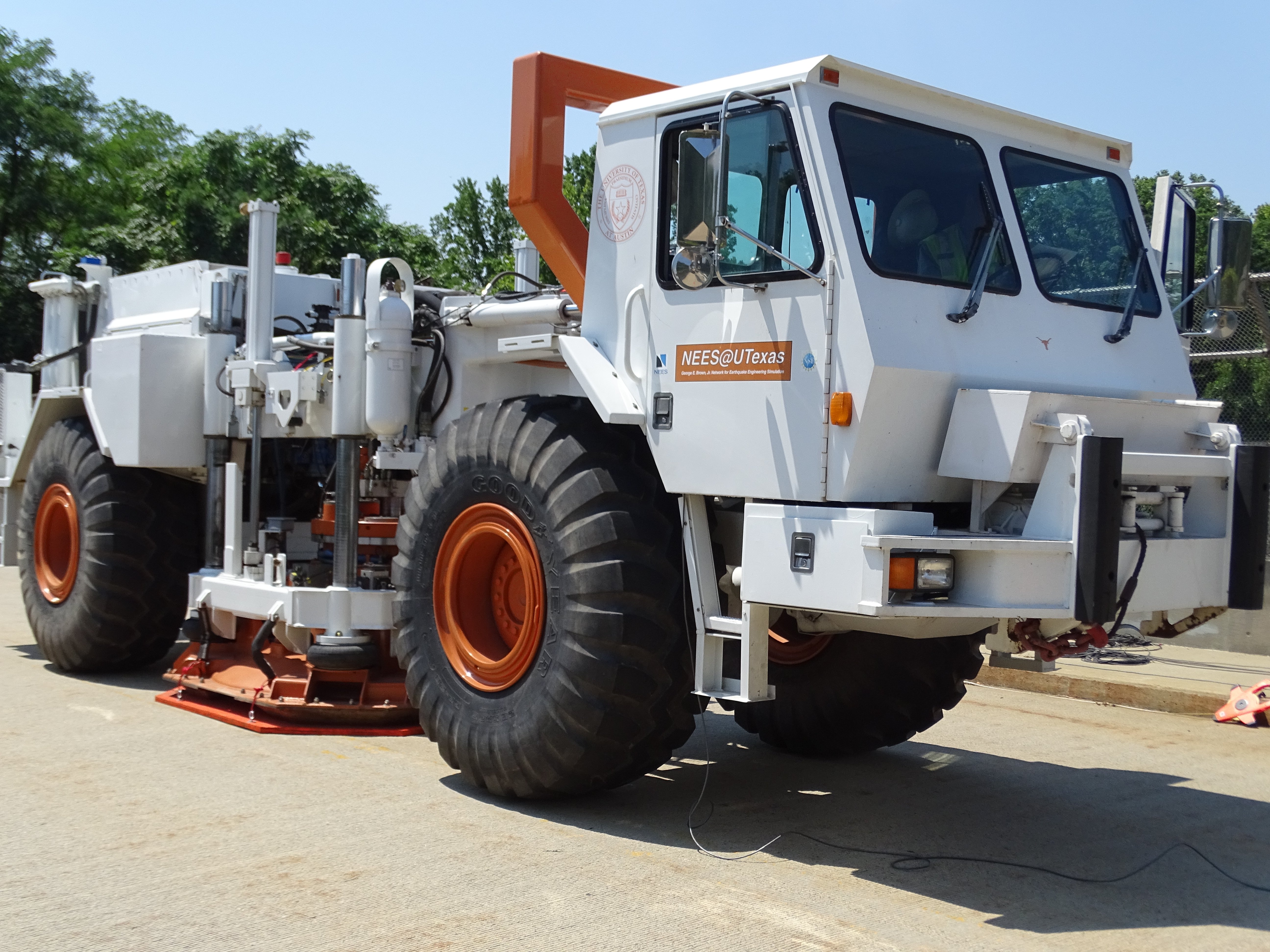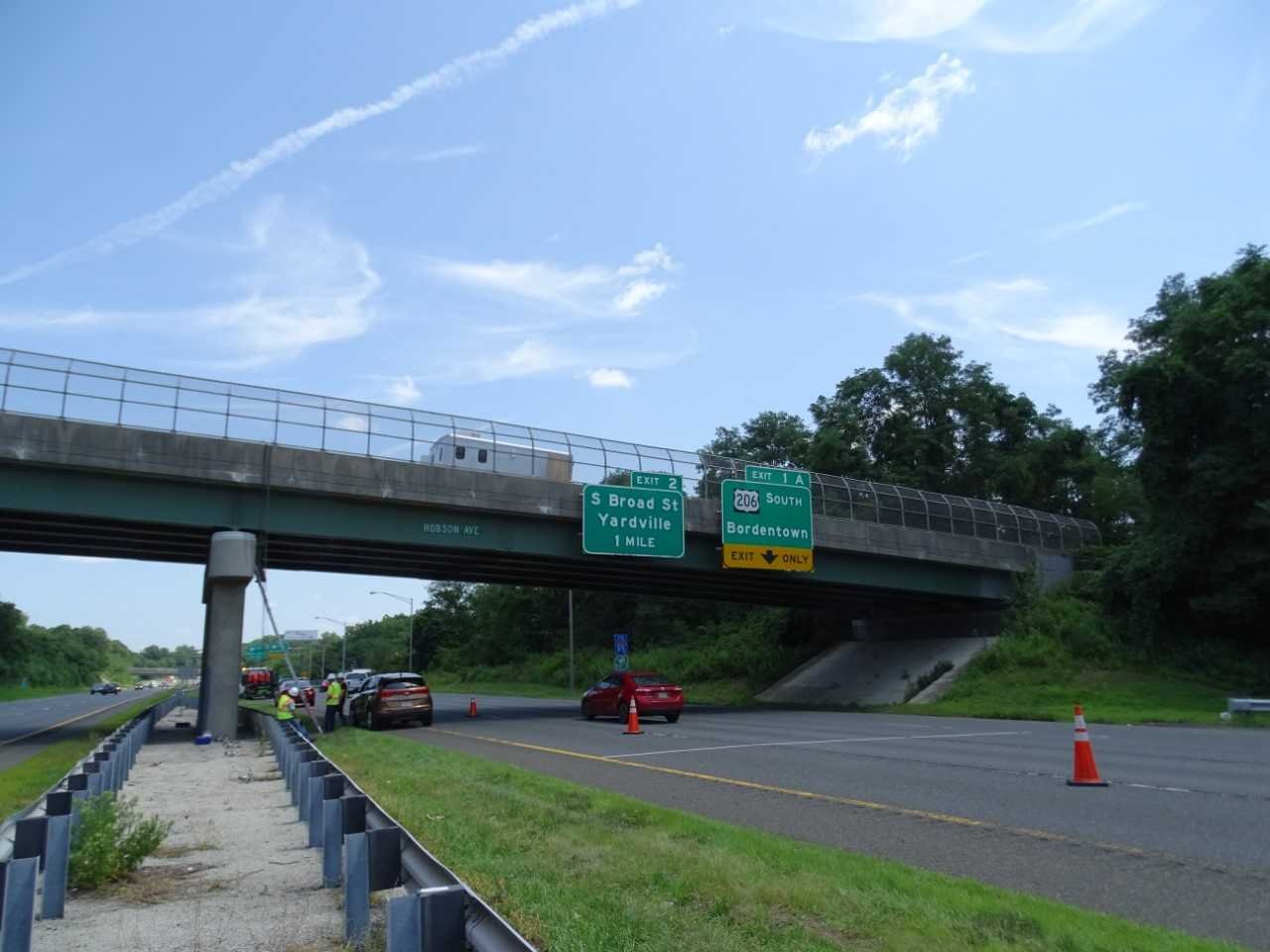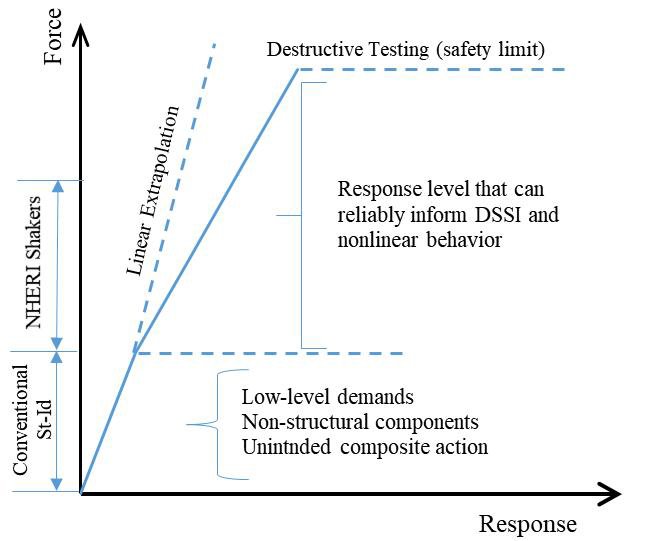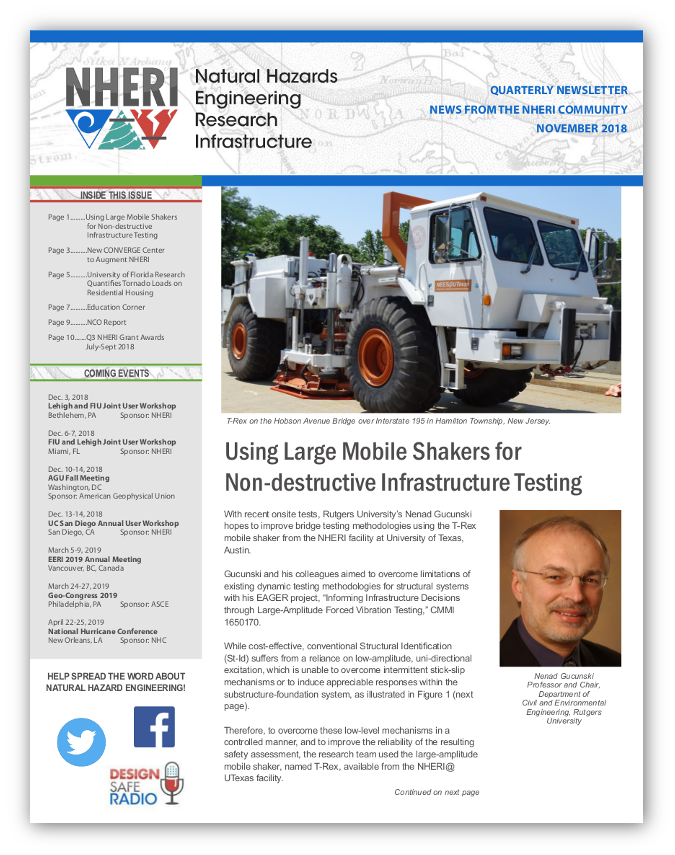Using Large Mobile Shakers for Non-Destructive Infrastructure Testing
Published on November 27, 2018

T-Rex on the Hobson Avenue Bridge over 195 in New Jersey.

Nenad Gucunksi
Professor and Chair,
Department of Civil and Environmental Engineering,
Rutgers University
With recent onsite tests, Rutgers Universitys Nenad Gucunski hopes to improve bridge testing methodologies using the T-Rex mobile shaker from the NHERI at University of Texas, Austin, facility.
Gucunski and his colleagues aimed to overcome limitations of existing dynamic testing methodologies for structural systems with his EAGER project, Informing Infrastructure Decisions through Large-Amplitude Forced Vibration Testing, CMMI 1650170.
While cost-effective, conventional Structural Identification (St-Id) suffers from a reliance on low-amplitude, uni-directional excitation, which is unable to overcome intermittent stick-slip mechanisms or to induce appreciable responses within the substructure-foundation system, as illustrated in Figure 1.
Therefore, to overcome these low-level mechanisms in a controlled manner, and to improve the reliability of the resulting safety assessment, the research team used the large-amplitude mobile shaker, named T-Rex, available from the NHERI@UTexas facility. T-Rex provides opportunities for pushing the structural-foundation system beyond low-level responses to reveal performance characteristics that are more representative of the expected behavior under safety limit states.
The objective of the study was to apply low- to moderate-magnitude shaking to a bridge using T-Rex to capture the dynamic response and features, especially the resonant frequencies and their corresponding mode shapes.
The primary findings are as follows:
- Mobile shakers are an effective testing tool for structural health monitoring, or for global non-destructive evaluation (NDE), to assess the dynamic response of bridges.
- From the experimental frequency sweep, the tested bridge exhibited two different dominant modes of transverse vibration at 4.41 and 4.64 Hz. The experimental results confirm that consideration of dynamic soil-structure interaction (DSSI) in the finite element model is necessary to capture this behavior.
- Increasing the dynamic load magnitude leads to clearer transfer functions and phase angle measurements, allowing a better identification of dynamic characteristics such as resonant frequencies.
This shaking induces structural demands and load distributions that are much closer to the destructive testing limit, or actual levels of seismic loads, (as described in Figure 1) compared to conventional St-Id methods. The Hobson Avenue Bridge, a bridge over Interstate 195 in Hamilton Township, New Jersey, was selected for the study. It is a 67.4 meter (221 feet) two-span, steel girder jointed bridge with a three-hammerhead pier on a shallow continuous reinforced concrete (RC) footing.
It was fascinating to feel the bridge vibrations, to observe shaking of the secondary structures from one side, and to have full confidence in the control of that motion to the levels far below safety limits from another, Gucunski says. The use of large mobile shakers opens new opportunities in the evaluation of dynamic characteristics of bridges, and large structures in general, in what I would call global NDE, he says.
Next Steps
The successful demonstration of large mobile shakers in this project is leading to the investigation of another potential beneficial application.
The Region 2 University Transportation Center, led by Rutgers Center for Advanced Infrastructure and Transportation (CAIT), is sponsoring a project that will examine the use of large mobile shakers in characterization of unknown bridge foundations.
While the two projects have been demonstrations on bridges because of the ease of deployment, Gucunski hopes to expand their application to other structures that equally necessitate evaluation of their dynamic characteristics and ability to withstand anticipated dynamic loads.

A side view of the Hobson Avenue Bridge over Interstate 195 in Hamilton Township, New Jersey.

Figure 1. Comparison between conventional St-Id techniques with the proposed use of NHERI shakers.
NHERI Quarterly
Autumn 2018
Using Large Mobile Shakers for Non-destructive Infrastructure Testing
New CONVERGE Center to Augment NHERI
University of Florida Research Quantifies Tornado Loads on Residential Housing
Message from the Network Coordination Office
Q3 NHERI Awards JulySept 2018








